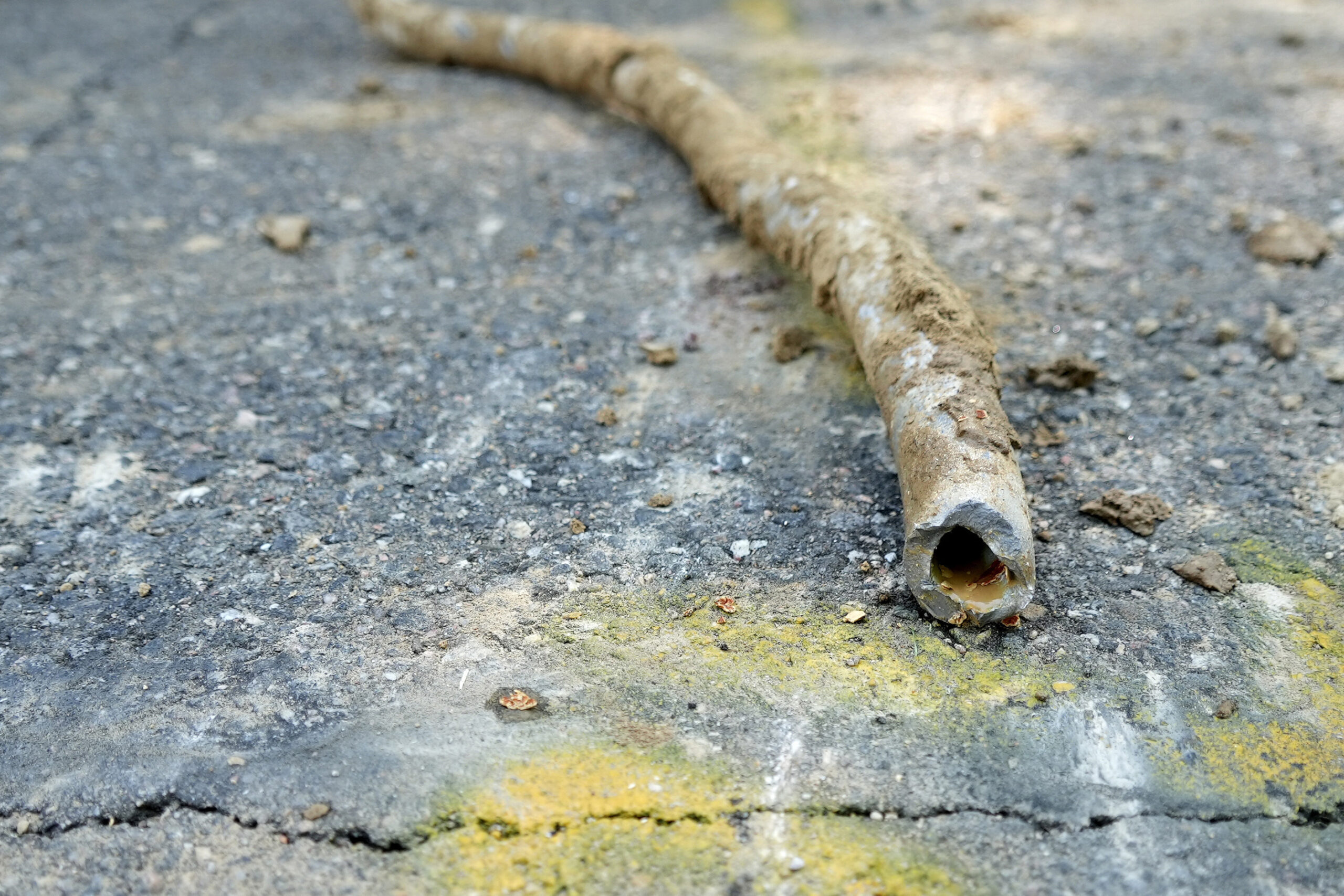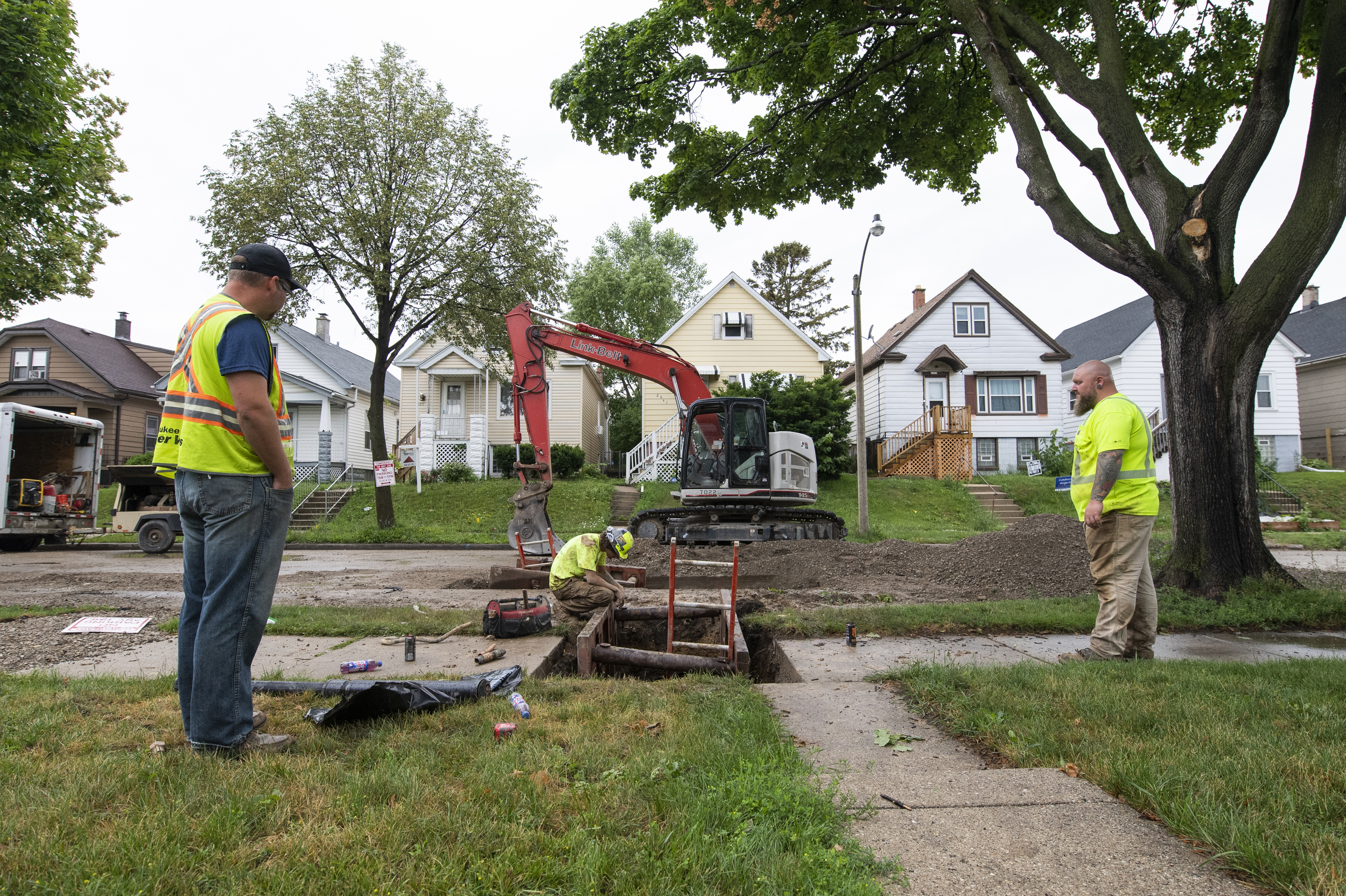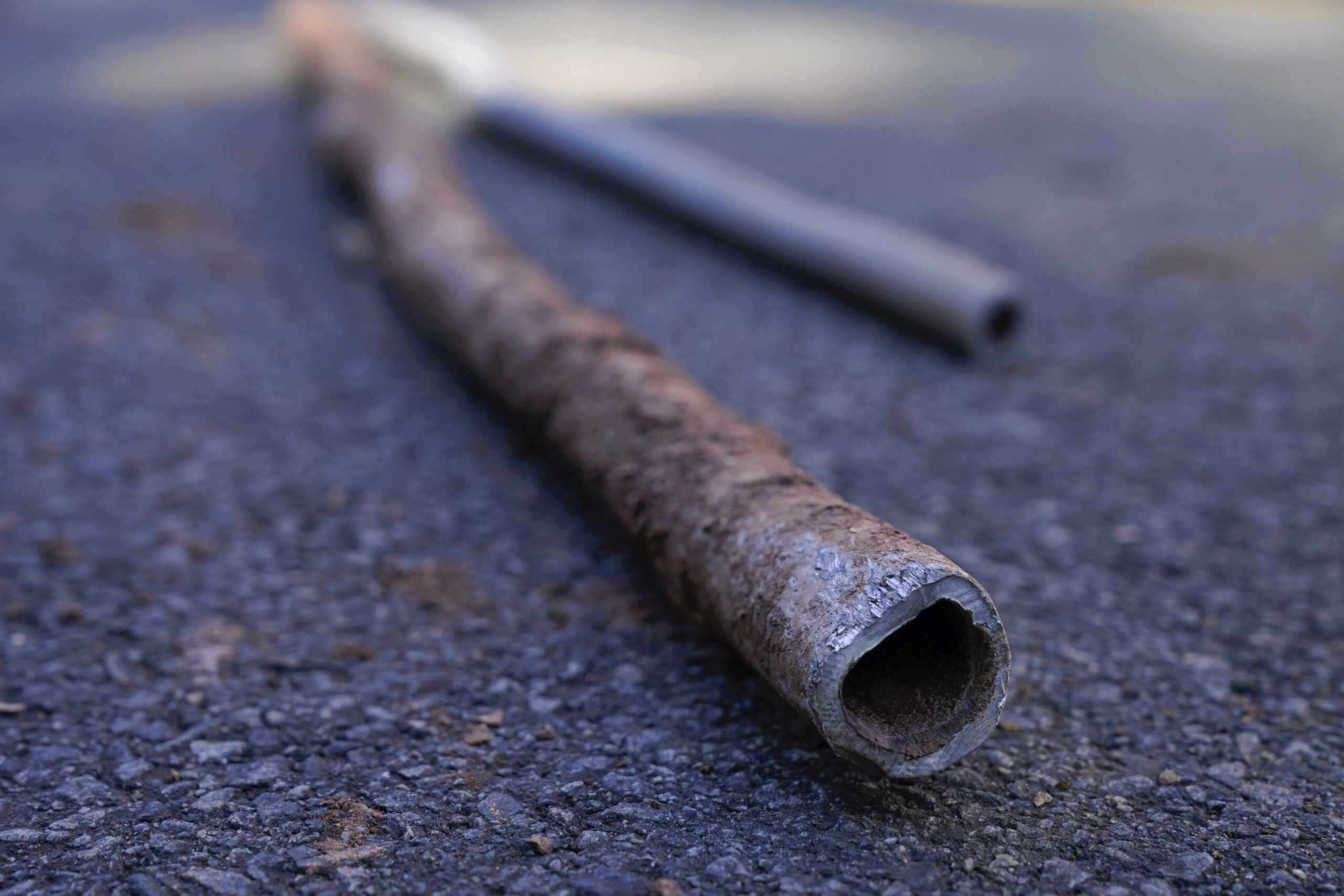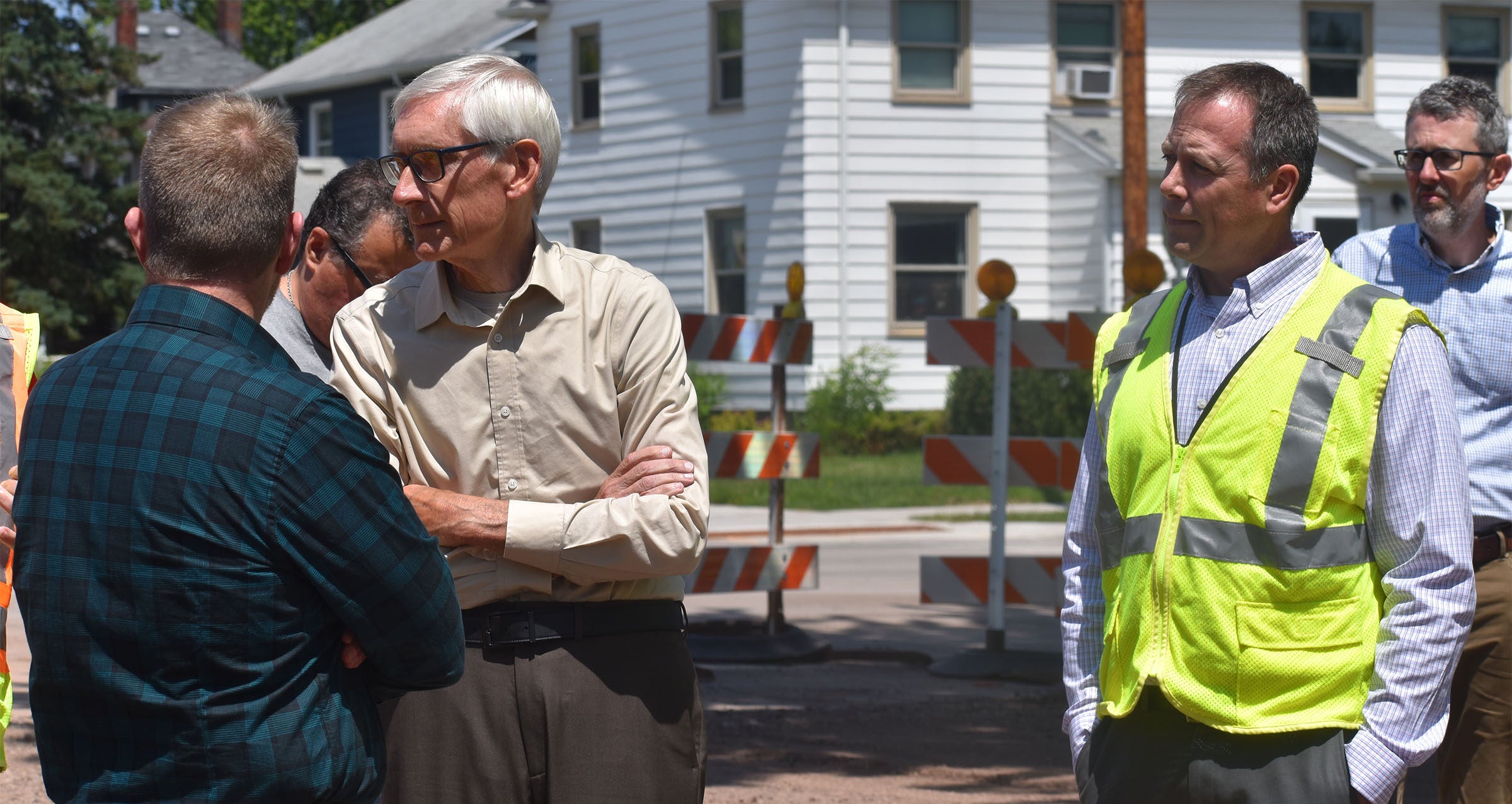Most communities across the nation would have to replace lead pipes within the next decade under a proposal announced by the Environmental Protection Agency on Thursday, with the agency estimating there are 341,000 lead lines in Wisconsin.
The EPA wants to tighten standards after the Trump administration revised the agency’s Lead and Copper rule, which was first enacted in 1991. The agency’s plan would lower the level that triggers action to address lead pipes from 15 parts per billion to 10 parts per billion. Beyond that level, water systems would have to install or make changes to treatment to reduce lead in drinking water.
The changes would also require water utilities to locate lead pipes, improve drinking water sampling, and provide filters to customers when systems exceed action levels for lead multiple times.
News with a little more humanity
WPR’s “Wisconsin Today” newsletter keeps you connected to the state you love without feeling overwhelmed. No paywall. No agenda. No corporate filter.
More than 9 million lead service lines exist nationwide. The most recent estimates from the Public Service Commission are lower than the EPA estimates for the state, showing Wisconsin water utilities have around 158,000 lead lines.

Evan Feinauer, staff attorney for Clean Wisconsin, said the accelerated timeline for replacing lead lines is significant. He said it would take decades longer under the existing rule.
“It’s what everybody’s been asking for for a very long time,” Feinauer said. “That there’ll be something that’s much more proactive and aggressive about getting these service lines out of the ground.”
Lead in paint and dust are the primary source of lead exposure in Wisconsin, but water crises like the one in Flint, Michigan, have highlighted the ongoing problem with lead in drinking water. Lead exposure can damage the brain and kidneys, and children with lead poisoning can experience learning and behavioral issues. There is no safe level of lead despite the higher regulatory thresholds that trigger steps to address lead in drinking water.
The lead crisis has hit communities of color the hardest in Wisconsin. Black children under the age of six are four times more likely to test positive for lead poisoning than white children, according to data from the Wisconsin Department of Health Services. Black children have a lead poisoning rate of 6.5 percent. Lead poisoning rates are twice as high among American Indian children, and higher rates also exist among Asian and Hispanic children than their white counterparts.

“With collaboration and the focused actions proposed today, EPA is delivering on our charge to protect all Americans, especially communities of color, that are disproportionately harmed by lead in drinking water systems,” EPA Administrator Michael S. Regan said in a statement.
The proposal is expected to cost states billions of dollars each year to implement. The Bipartisan Infrastructure Law included $50 billion to help upgrade drinking water and wastewater infrastructure, as well as $15 billion for lead line replacement.
Around $370 million has been announced for Wisconsin under the law to improve infrastructure with around $129.5 million dedicated to lead pipe replacement, according to the White House.
In the state’s largest city, around 65,000 active lead lines need to be removed in Milwaukee. The city is set to receive more than $30 million in funding through the state’s Safe Drinking Water Loan Program as part of ongoing efforts to replace lead pipes.
Milwaukee Water Works has been replacing an average of about 1,000 pipes each year with a goal of removing 1,200 lines this year. As of November, its website shows 1,016 lead pipes had been removed. Brian Rothgery, a spokesperson with Milwaukee Water Works, said the EPA’s proposed changes would require a three-year average of replacing between 5,850 to 6,900 lead pipes each year.
Critics of the city say officials haven’t been moving fast enough to replace lead pipes, including Derek Beyer, steering committee member for the Get the Lead Out Coalition in Milwaukee. Beyer argued some city officials have tried to shift focus toward the primary source of exposure from lead in homes and away from drinking water.
“At the end of the day, people are being harmed by this issue — something that’s acknowledged now all the way to the presidential level,” Beyer said. “The debate of what’s poisoning us more, which was floated by city hall, is kind of moot to me. Now, it’s like how fast can we get rid of this toxin that’s causing harm.”

Milwaukee Freshwater For Life Action Coalition also urged Milwaukee Mayor Cavalier Johnson and the Milwaukee Common Council to bring its 20-year plan for removing lead pipes in line with the EPA’s new goal.
Jeff Fleming, communications director for Milwaukee’s mayor, said the city has always focused on lead paint as the primary factor for cases of childhood lead poisoning. He noted some neighborhoods with greater concentrations of lead laterals have lower rates of lead poisoning. Even so, Fleming said any potential exposure should be addressed, adding the city’s 20-year plan reduced the previous timeline for replacement of lead pipes.
“Today’s new EPA rule will push the city to accomplish the lead service line replacement goal even sooner,” Fleming said.
The problem isn’t an inexpensive fix for Milwaukee as it’s estimated to cost as much as $750 million to replace lead pipes. Feinauer noted communities like Milwaukee often face budgetary constraints and logistical challenges. The rule does offer flexibility for cities where it may take longer to replace lead pipes.
Feinauer said the rule will hopefully provide the technical assistance and resources to quickly get lead pipes out of the ground. Since 1998, a recent Wisconsin Policy Forum report found more than 73,000 lead lines have been removed statewide. Around half of them were replaced in the last five years.
Cities like Madison, Green Bay, and Stoughton have removed all of their lead lines.
Wisconsin Public Radio, © Copyright 2025, Board of Regents of the University of Wisconsin System and Wisconsin Educational Communications Board.




